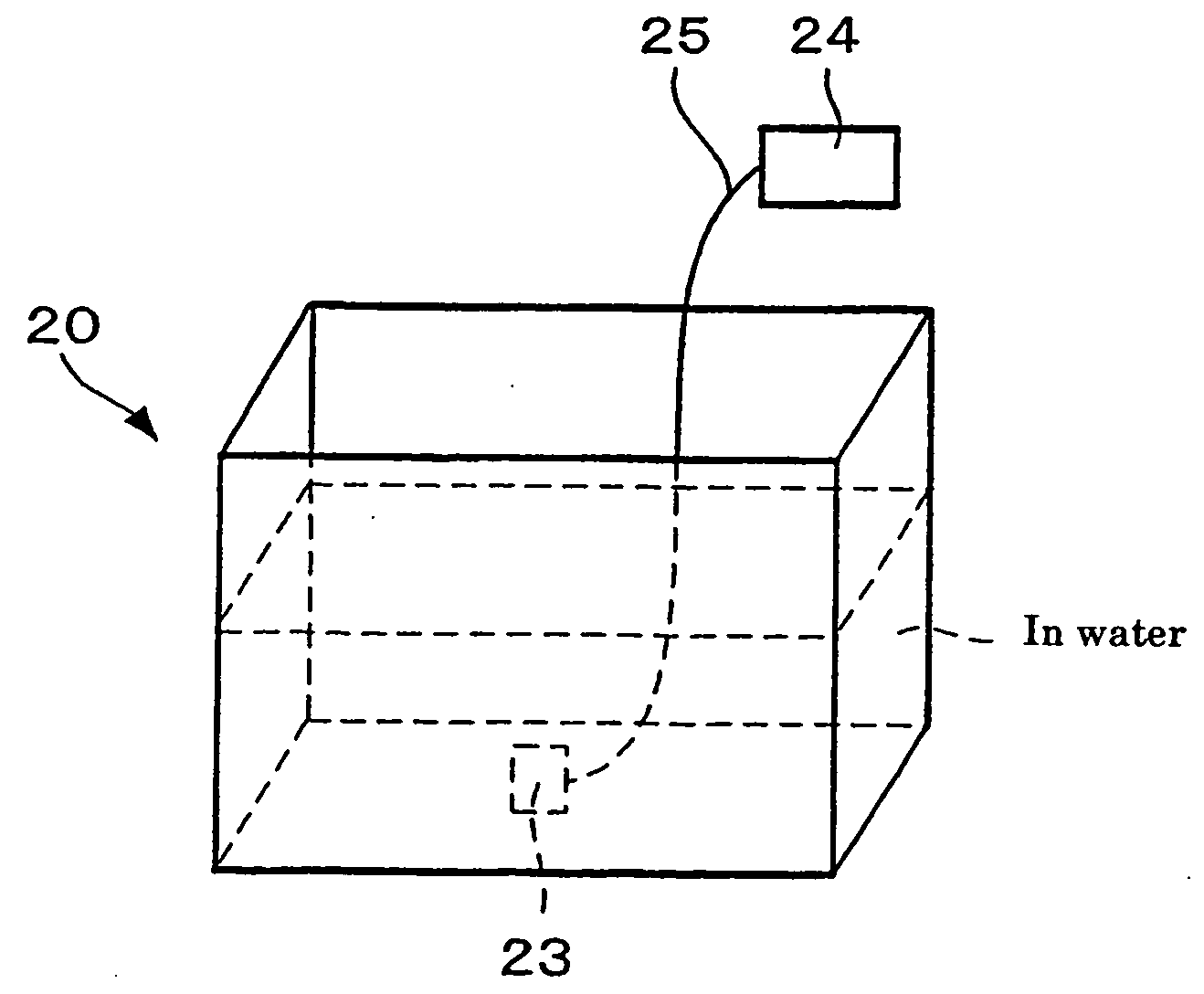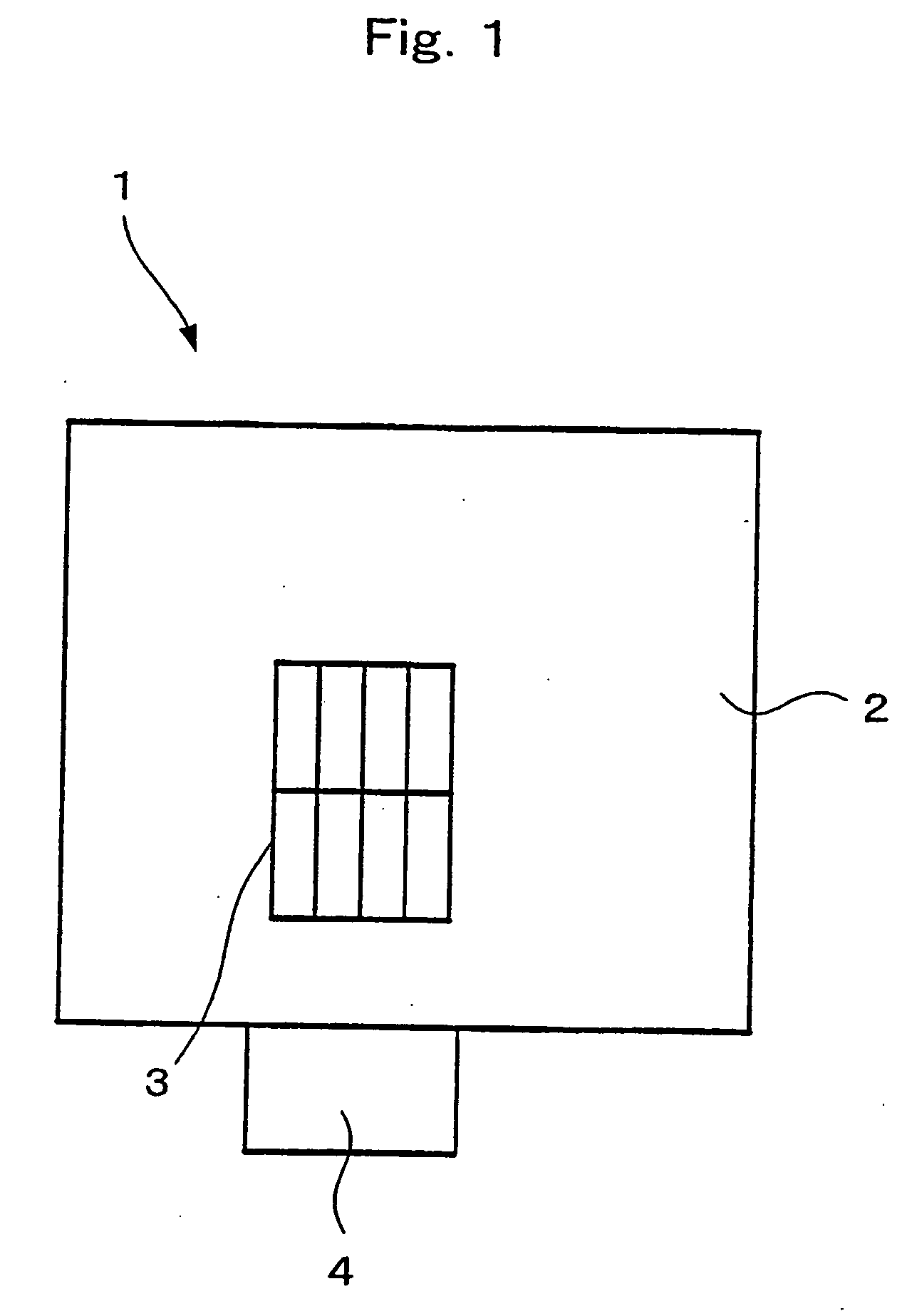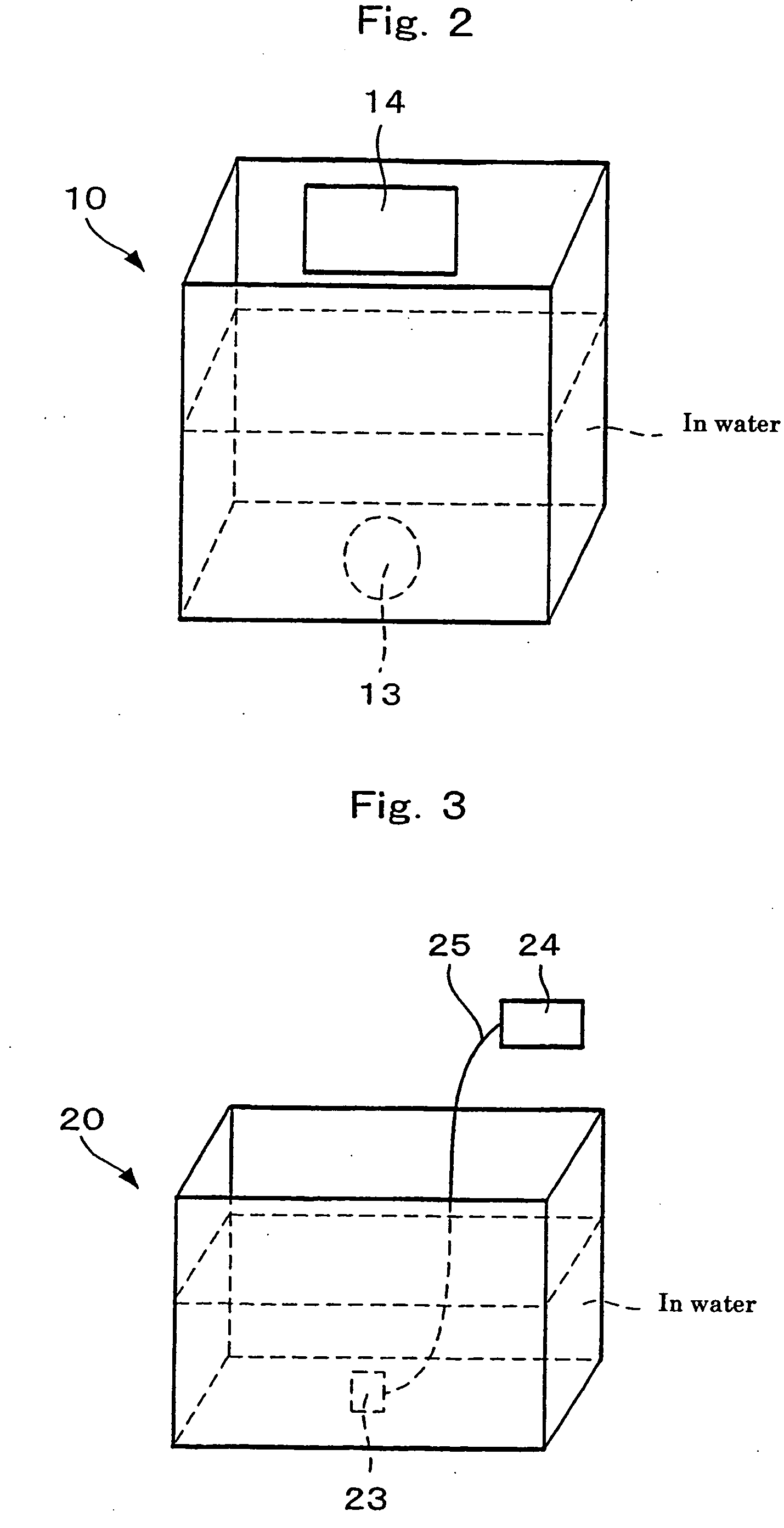Luminescent glass
- Summary
- Abstract
- Description
- Claims
- Application Information
AI Technical Summary
Benefits of technology
Problems solved by technology
Method used
Image
Examples
example 1
[0111] Na2CO3, H3BO3, SiO2 and Al(OH)3 were added to commercially available ground waste glass (green color glass), to prepare a mixture consisting of 35.0 wt. % of the waste glass, 3.1 wt. % of Na2O, 26.2 wt. % of SiO2 and 2.4 wt. % of Al2O3. The mixture was melted in the air at 1400° C. and cooled, to obtain a disc-shaped alkali borosilicate glass with a diameter of about 10 cm and a thickness of a little less than 2 mm. The obtained glass comprised 8.4 wt. % of Na2O, 3.9 wt. % of CaO, 2.8 wt. % of Al2O3, 51.6 wt. % of SiO2 and 33.3 wt. % of B2O3, as calculated from the raw material proportions, and further contained about 0.05 parts by weight of Cr2O3 per 100 parts by weight of the total of the above components.
[0112] The obtained alkali borosilicate glass was then heat-treated in the air at 600° C. for 40 hours to cause phase separation of the glass.
[0113] Subsequently, an about 1.2 cm square was cut from the phase-separated glass, polished and acid-treated by immersing it in ...
example 2
[0123] 0.3 g of an acid-treated porous glass obtained in the same manner as in Example 1 was placed in a solution of 0.2 g of SnCl2.2H2O in 25 ml of distilled water, allowed to stand at room temperature for 1 hour, taken out from the solution, and dried at room temperature.
[0124] The glass was then slowly heated at a rate of 2° C. / min, and heated at 1100° C. for 2 hours in an alumina crucible containing carbon, to give a transparent glass.
[0125] The glass was irradiated with UV light at a wavelength of 264 nm to obtain an emission spectrum. FIG. 5(a) shows the obtained emission spectrum. This figure reveals that the glass to which Sn was adsorbed, obtained by the above process, exhibit strong fluorescence around 400 nm when irradiated with UV light at 264 nm.
[0126] With respect to the fluorescence at a wavelength of 395 nm of the glass, the excitation spectrum was obtained. FIG. 5(b) shows the results. As shown in this figure, the glass to which Sn is adsorbed is excited by irrad...
example 3
[0127] 0.3 g of an acid-treated porous glass obtained in the same manner as in Example 1 was placed in a solution of 2.6 g of Mn(NO3)2 in 25 ml of distilled water, allowed to stand at room temperature for 1 hour, taken out from the solution, and dried at room temperature.
[0128] The glass was then slowly heated at a rate of 2° C. / min, and heated at 1100° C. for 2 hours in an alumina crucible containing carbon, to give a transparent glass.
[0129] The glass was irradiated with UV light at a wavelength of 300 nm to obtain an emission spectrum. FIG. 6(a) shows the obtained emission spectrum. This figure reveals that the glass to which Mn is adsorbed, obtained by the above process, exhibits strong fluorescence in the region of 550 nm to 600 nm when irradiated with UV light at 300 nm.
[0130]FIG. 6(b) is a graph showing the excitation wavelength dependence of the luminescence intensity of fluorescence at 568 nm, of the glass. This figure reveals that the glass to which Mn is adsorbed is ex...
PUM
| Property | Measurement | Unit |
|---|---|---|
| Temperature | aaaaa | aaaaa |
| Mechanical strength | aaaaa | aaaaa |
| Thermal resistance | aaaaa | aaaaa |
Abstract
Description
Claims
Application Information
 Login to View More
Login to View More - R&D
- Intellectual Property
- Life Sciences
- Materials
- Tech Scout
- Unparalleled Data Quality
- Higher Quality Content
- 60% Fewer Hallucinations
Browse by: Latest US Patents, China's latest patents, Technical Efficacy Thesaurus, Application Domain, Technology Topic, Popular Technical Reports.
© 2025 PatSnap. All rights reserved.Legal|Privacy policy|Modern Slavery Act Transparency Statement|Sitemap|About US| Contact US: help@patsnap.com



